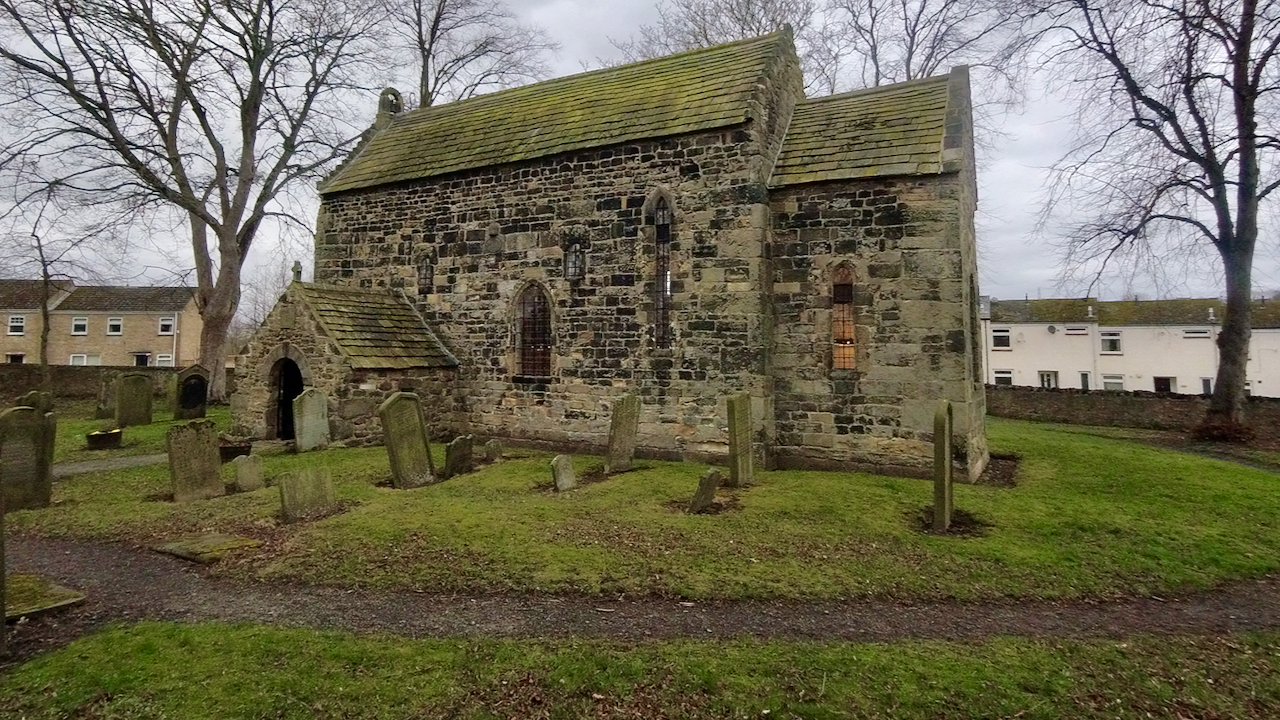The quiet village of Escomb lies at the end of a mile long cul-de-sac down a steep bank. It’s a village which fortunes have ebbed and flowed.
The origin of the name derives from the Saxon name “Eda“, which led to the medieval Ediscombe — the second element, “combe“‘ is a sheltered dwelling place. The settlement is mentioned in the “History of St Cuthbert” of 1031, and the “Boldon Book”, of 1183. But it was the opening of nearby coal mines in the early part of the 19th century that was transformed into as a recognisable village1Snowdon, R. (1979) Condemned to die: housing action and social justice South West Durham 1949-1979, Page 139 Durham theses, Durham University. Available at Durham E-Theses Online: http://etheses.dur.ac.uk/10107/.
In the 1920s, the pits became exhausted, and the village began to decline. Post-war, the houses of Escomb and its neighbour, Witton Park, were considered unfit for habitation. As late as 1975, it was proposed that “Witton Park and Escomb should be wholly depopulated and returned to agriculture” 2Ibid. Page 10.
But Escomb had its Anglo-Saxon church, one of the few remaining complete Anglo-Saxon churches in the country and a Grade I listed building. All the unfit houses in Escomb were demolished, and the village redeveloped. At Witton Park, the houses were just demolished, and the sites left neglected3Ibid. Page 178.
The gaunt and affecting church was built in the early 8th century, during the Northumbrian Renaissance, a period of great cultural activity in the region when Aldfrith ruled as King of Northumbria, England’s first literate king4Adams, Max. “The King in the North”. Page 375. Head of Zeus. 2013..
Much of the stonework was reused from the nearby Roman fort at Binchester in a mixture of Romanesque and Anglo-Saxon architectural styles on a simple rectangular plan and featuring a typically high narrow nave and chancel arch.
The church suffered alongside the village but has since been restored and renovated. There are several interesting historical artifacts inside the church, including an Anglo-Saxon cross shaft and an ancient font. Also, intriguing parts of medieval wall paintings have survived.
- 1Snowdon, R. (1979) Condemned to die: housing action and social justice South West Durham 1949-1979, Page 139 Durham theses, Durham University. Available at Durham E-Theses Online: http://etheses.dur.ac.uk/10107/
- 2Ibid. Page 10
- 3Ibid. Page 178
- 4Adams, Max. “The King in the North”. Page 375. Head of Zeus. 2013.

Leave a Reply